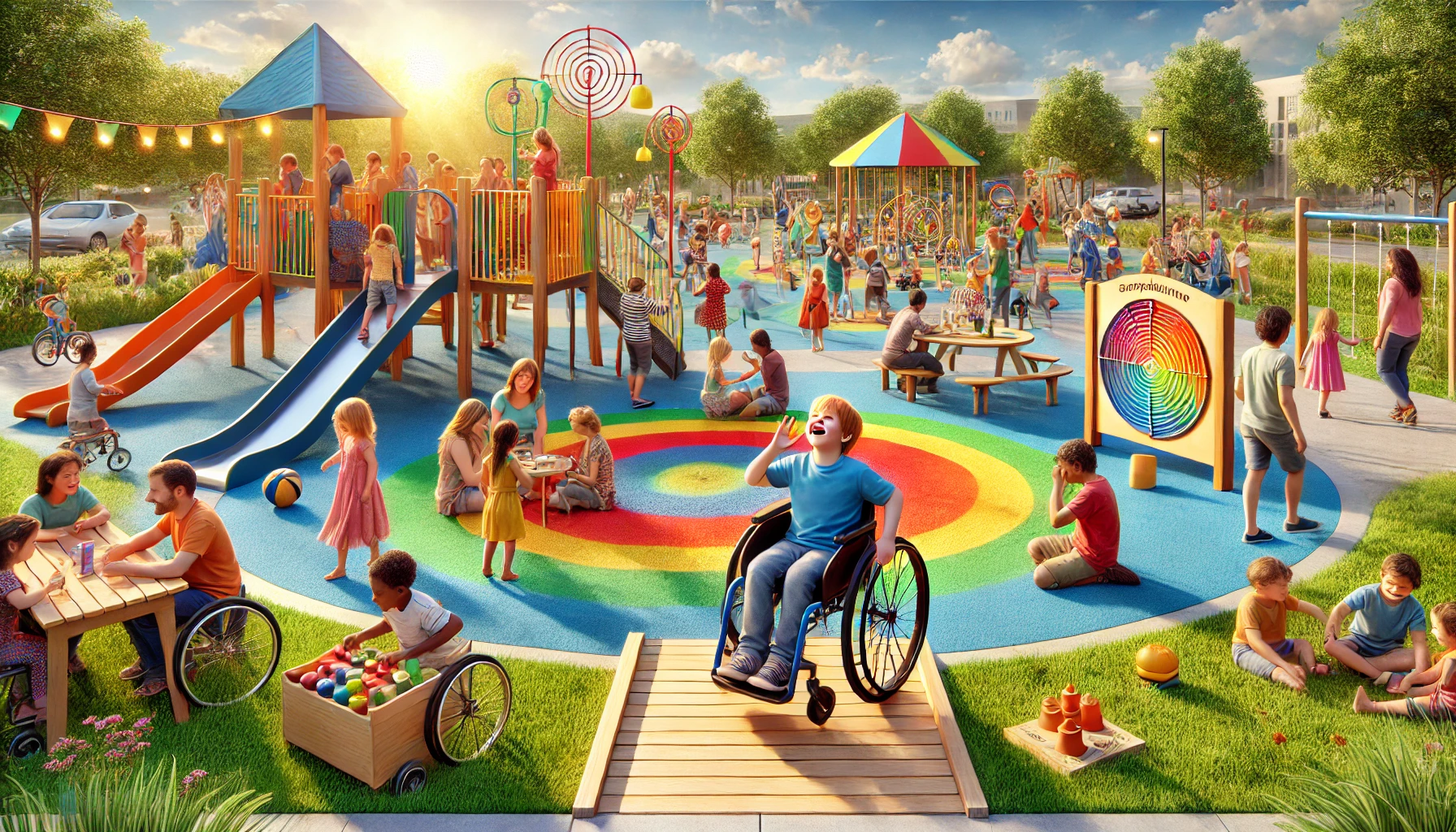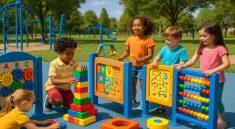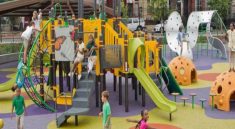PlaySourceHome – Play is a universal language that fosters learning, creativity, and social connections. However, traditional playgrounds often fail to accommodate children with varying abilities, leaving some unable to fully participate. Inclusive playgrounds are changing this narrative by creating spaces where every child, regardless of their physical, sensory, or cognitive abilities, can enjoy, learn, and grow together.
These thoughtfully designed playgrounds ensure that no child feels excluded, offering equipment and layouts that encourage interaction, accessibility, and fun for everyone. Inclusive playgrounds are not just about play—they are about building a more inclusive society, one child at a time.
What Are Inclusive Playgrounds?
Inclusive playgrounds are spaces designed to accommodate children of all abilities. Unlike traditional playgrounds, they feature equipment and structures that are accessible to children with disabilities while still engaging for able-bodied kids.
Examples include ramps for wheelchair access, sensory panels for children with sensory needs, and adaptive swings that provide additional support. By integrating these elements, playgrounds promote equality, foster friendships, and enable kids to play side by side.
Benefits of Inclusive Playgrounds
Inclusive playgrounds provide numerous benefits for children, parents, and communities:
- Encourage Social Interaction: Children of all abilities can play and learn from each other, fostering empathy and cooperation.
- Support Physical Development: Accessible equipment ensures that all kids can improve their motor skills and stay active.
- Boost Confidence: Creating an environment where every child can participate helps build self-esteem.
- Foster Inclusion: These playgrounds encourage acceptance and understanding among children from diverse backgrounds and abilities.
These spaces also provide a sense of belonging for families, offering parents peace of mind that their children can play safely and happily.

READ MORE : Fun Family Weekend Activities in Arcadia
Design Elements of an Inclusive Playground
To ensure accessibility and engagement for all, inclusive playgrounds include thoughtful design features such as:
- Ramps and Wide Pathways: Allow easy navigation for wheelchairs and strollers.
- Sensory Play Areas: Include tactile, auditory, and visual elements for children with sensory needs.
- Adaptive Swings: Provide extra support for children who need it.
- Ground-Level Play Structures: Ensure that all children can participate without needing to climb.
- Quiet Zones: Offer spaces for children who may become overstimulated and need a break.
By integrating these elements, playgrounds become places where every child can enjoy their time without barriers.
The Role of Communities in Supporting Inclusive Playgrounds
Building inclusive playgrounds requires the support and involvement of communities. Collaboration between local governments, schools, and parents is essential for funding, design, and implementation.
Community engagement also raises awareness about the importance of inclusion and ensures that the playground meets the specific needs of the local children it serves.
Creating a More Inclusive Future
Inclusive playgrounds go beyond physical spaces—they represent a commitment to equity and inclusion. By providing children with the opportunity to play together, these playgrounds help break down barriers, encourage acceptance, and inspire the next generation to value diversity.
Through inclusive play, we create a future where every child, regardless of their abilities, can thrive.



